site search
online catalog
CASED OPALOTYPE OF MAJOR ROBERT M. SULLY, CS ENGINEERS
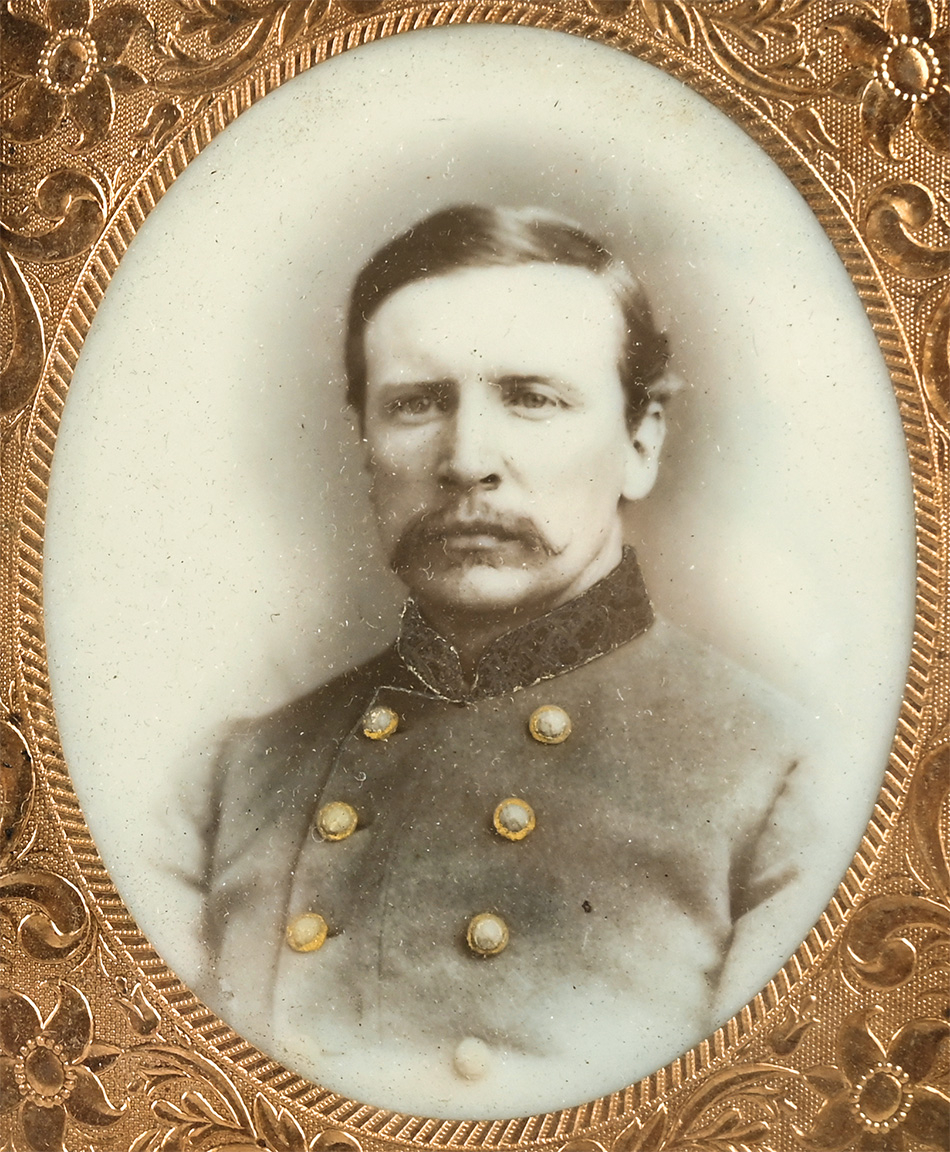
Hover to zoom


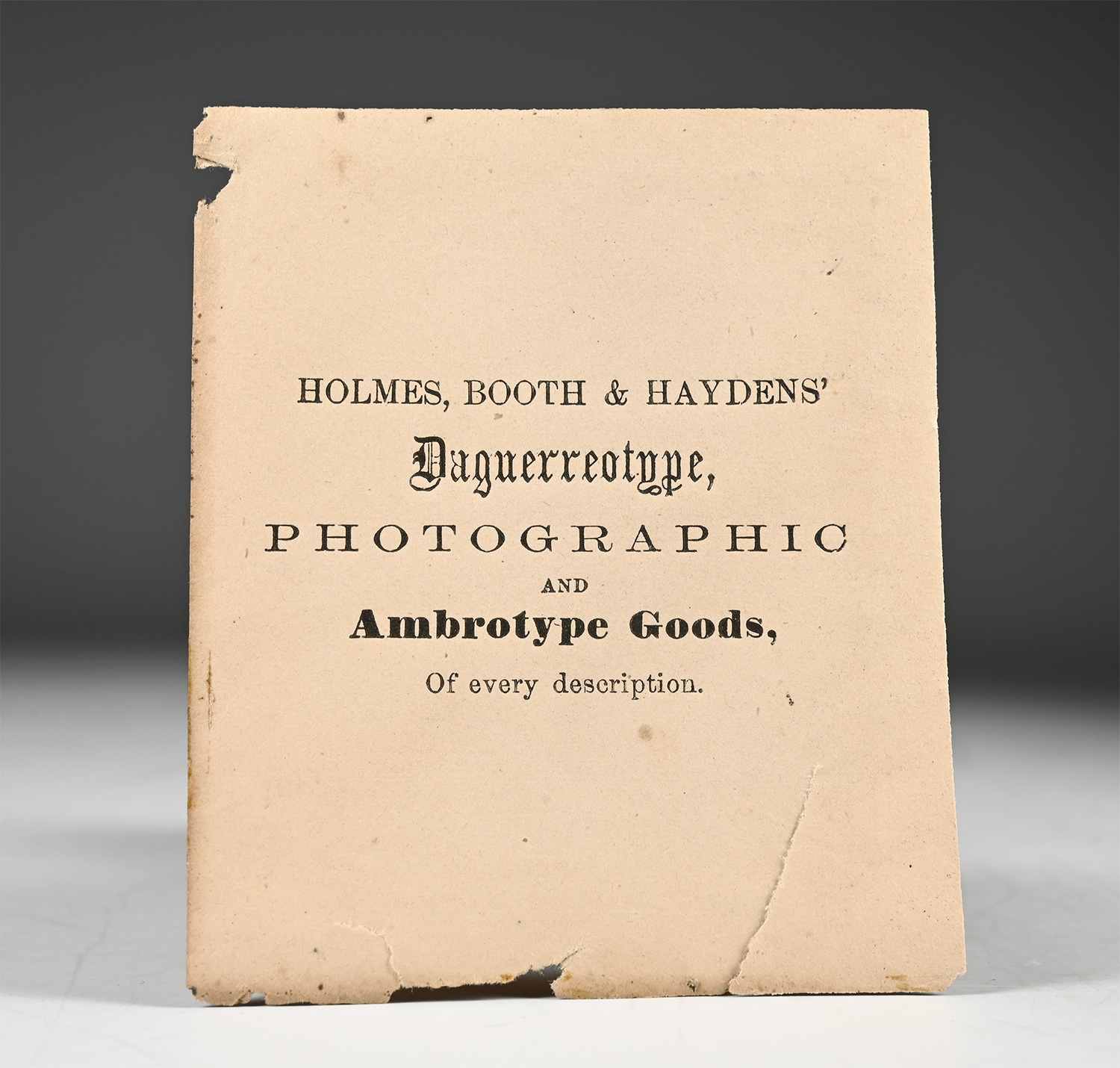
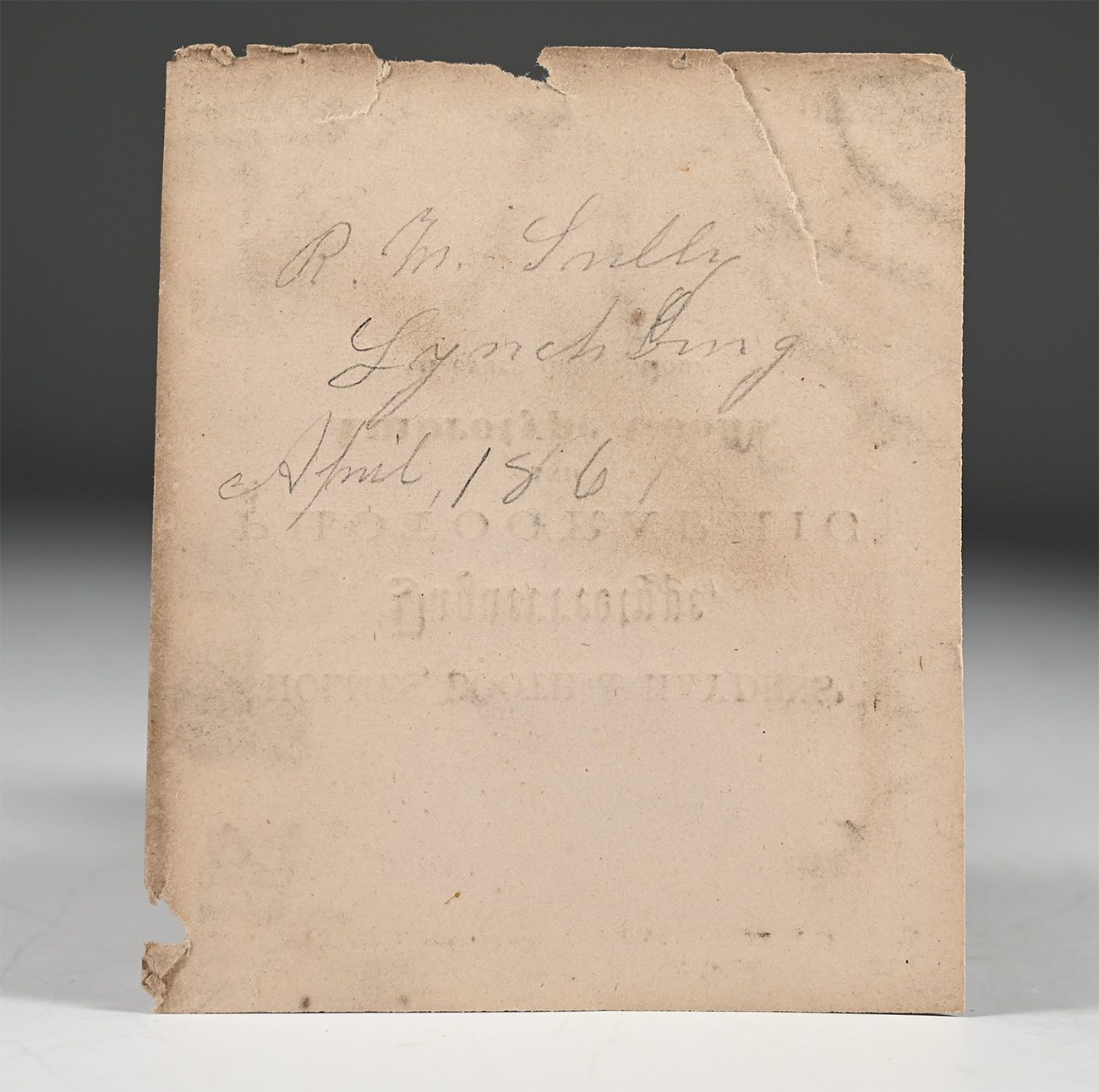
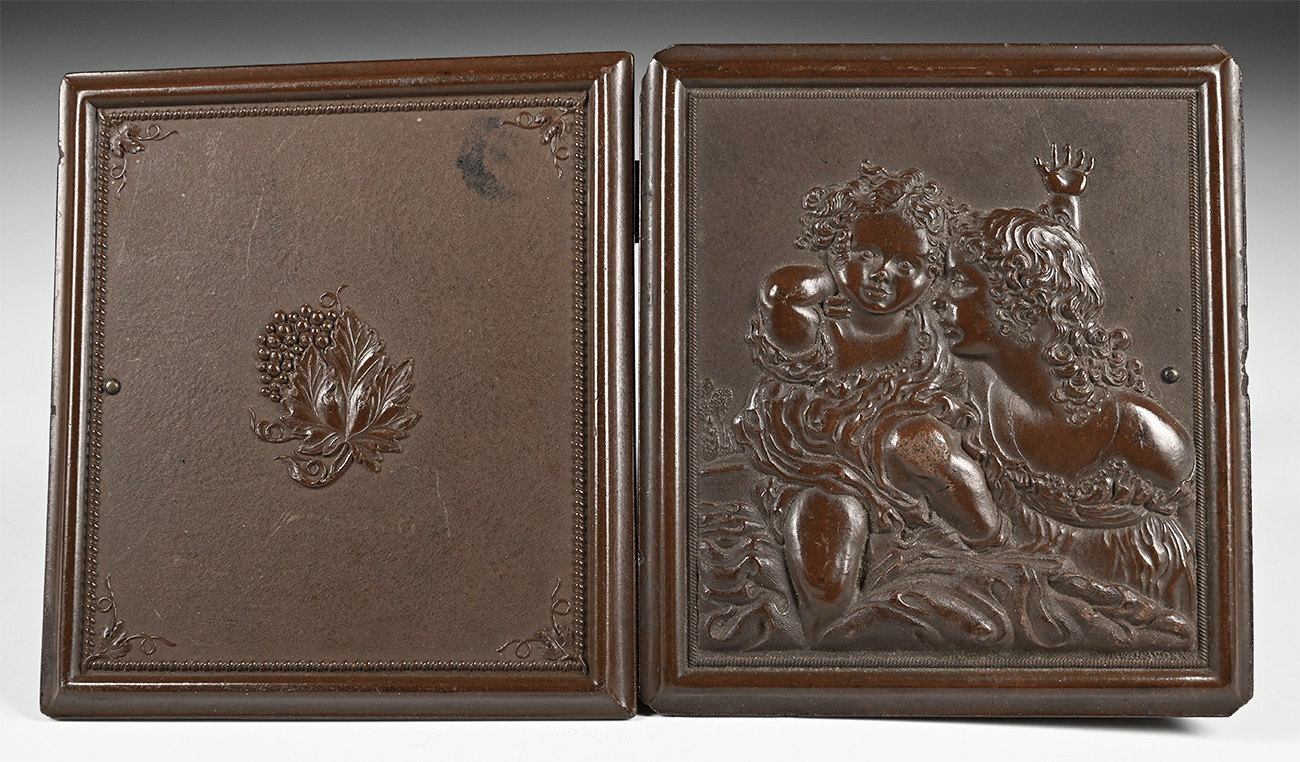
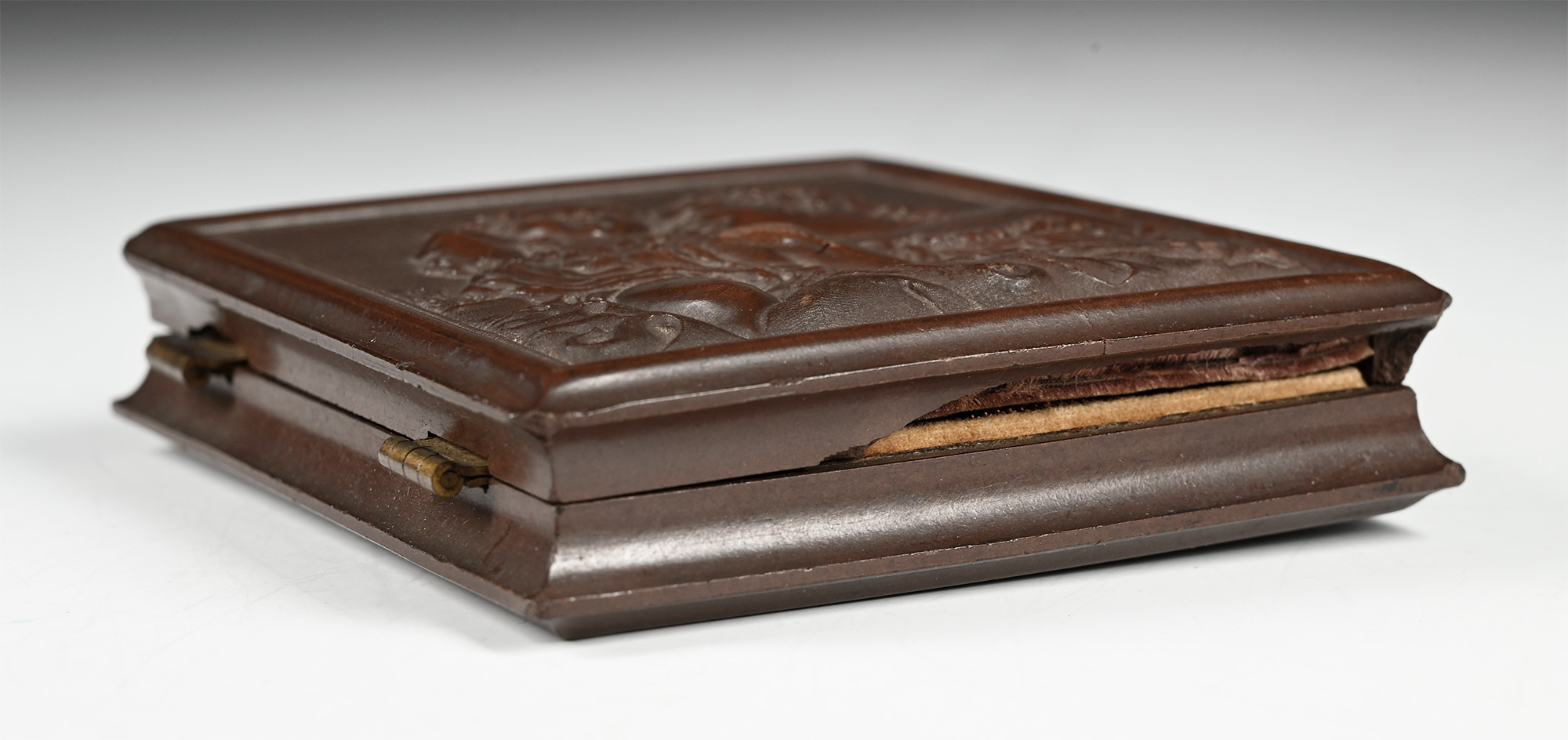
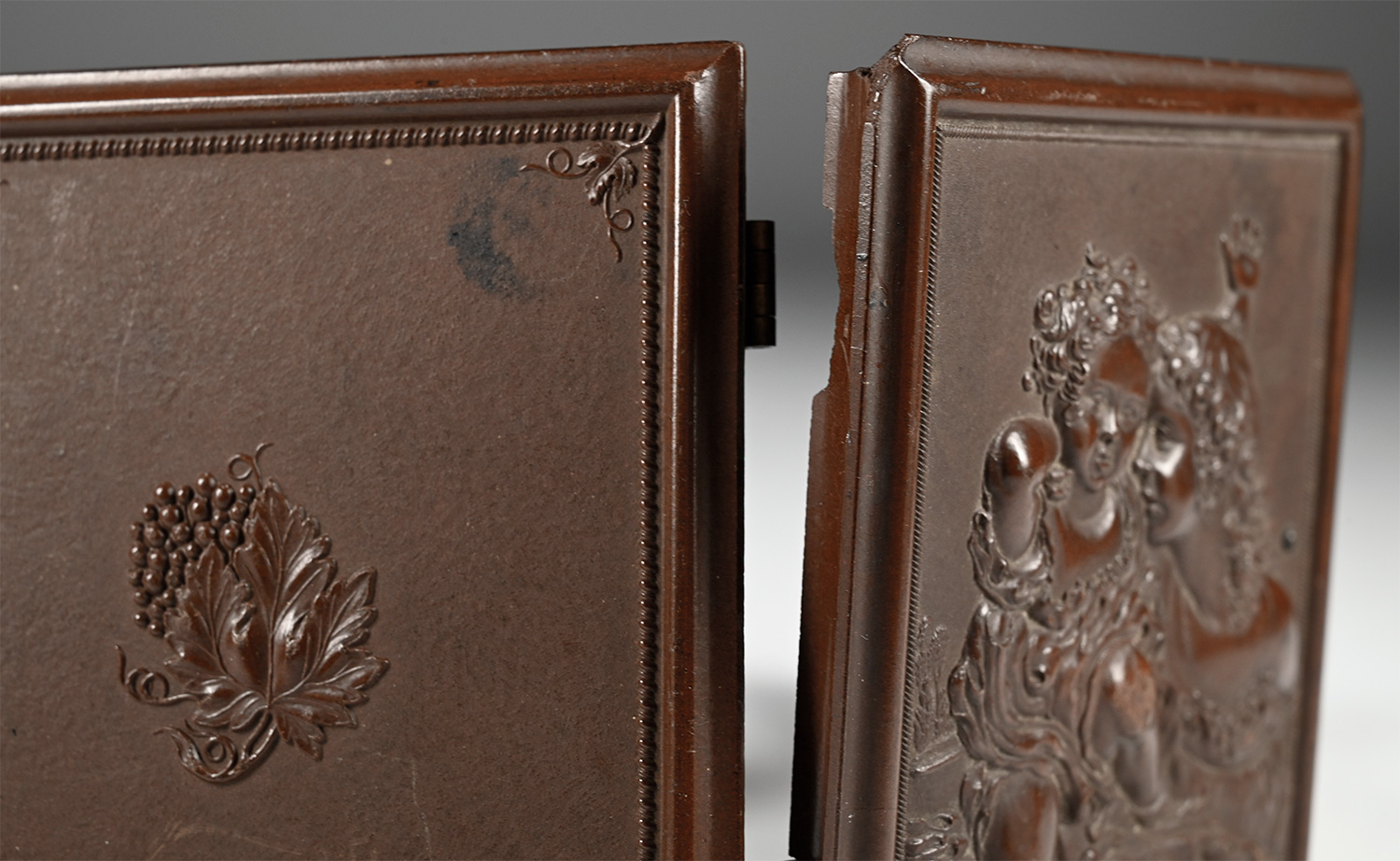
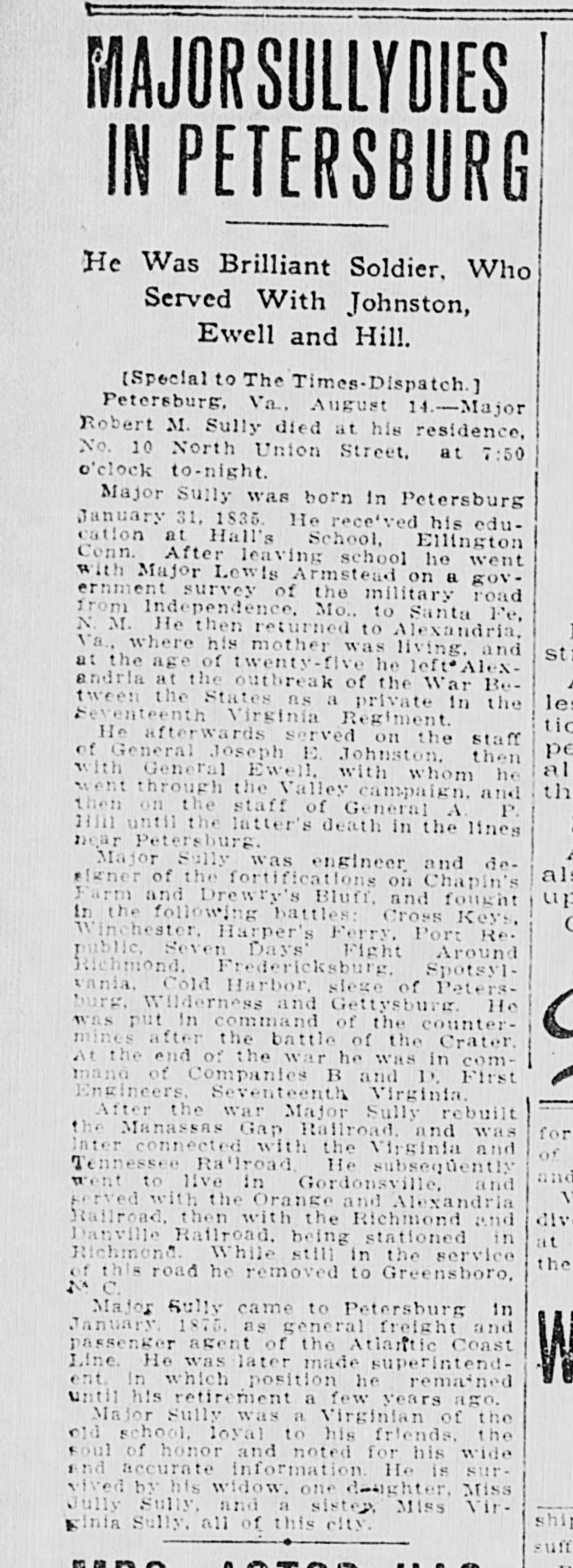
$2,750.00 SOLD
Quantity Available: None
Item Code: 1138-2006
Opalotypes were positive images created on milk glass. This sixth-plate is housed in thermoplastic figural case showing a mother and baby and has a Holmes, Booth and Hayden label in the back, on the reverse of which is written in period pencil: “R.M. Sully / Lynchburg / April 1861.” Sully’s future wife was born in Lynchburg and they married there after the war, likely accounting for the location. He was born in 1835 in Petersburg, Va., and named after his father, Robert M. Sully, a well-known portrait artist (and related to the more famous painter, Thomas Sully.) Educated in Connecticut, young Sully took up civil engineering, spending a brief sojourn with Lewis Armistead surveying a military road from Independence, Mo., to Santa Fe, NM, and then moved to Alexandria, Va., and started working for the Orange and Alexandria Railroad in 1857. When war broke out Sully immediately enlisted as a private in Capt. Morton Marye’s company, the Alexandria Riflemen, on 4/17/61, which was taken into Confederate service as Co. A of the 17th Virginia, but was quickly detached to better make use of his engineering talents.
In the photograph he appears in a gray double-breasted coat with military buttons outlined in gold. His collar is dark and shows no insignia. It is certainly a regulation Confederate coat, but 1861 seems rather early for it and we expect the pencil notation refers to his joining the army at the very beginning of the war rather than the precise date of the image: he served throughout the war, rising from a private in the infantry to a Major of Engineers, including significant staff duty, so it is very possible we are looking at an officer’s uniform.
Sully served in the ranks until after First Manassas, when he was detailed for engineer duty on 7/26/61. Although listed as a private on detached duty on the regimental rolls at least until October 1862, he seems to have been posted as an engineer on Johnston’s staff fairly early. He was employed in building bridges over Bull Run for the railroad from Manassas to Centreville and branches connecting with the quartermaster depot at Manassas, over which he was made superintendent. For the three weeks preceding the pull-back from Manassas in March 1862 he was assigned by Gen. Johnston with examining and selecting roads by which the army could withdraw and is sometimes referred to a Johnston’s “reconnoitering officer.”
In May/June 1862 he is listed as on Ewell’s staff and was later credited with serving in that position in the valley campaign, Ewell later praising him as a topographer, a reconnoitering officer, and for his knowledge of construction. He seems to have gained a commission as 1st Lieutenant of Engineers by June 1863, apparently a staff position, and then in April 1864 gained a commission as 1st Lieutenant of Co. D of the 1st Regiment of Engineer Troops, which had been organized in late 1863. In May 1864 he is mentioned in connection with moving a Confederate pontoon train to the James River. In January 1865, however, he was requesting a transfer to the “Corps of Engineers,” (apparently meaning as a staff officer again rather than among the troops) and seems to have gained it: he is referred to as a Major in his obituary, which also states that he was on A.P. Hill’s staff at the time of that general’s death at Petersburg in April 1865. According to his obituary, his battle honors included Winchester, Harpers Ferry, Port Republic, the Seven Days Battles, Fredericksburg, Gettysburg, Wilderness, Spotsylvania, and Petersburg. At the latter place he was in charge of counter-mining operations after the crater, and also laid out the fortifications at Chapin’s Farm and Drewry’s Bluff. After the fall of Richmond and Petersburg he apparently made it Johnston’s forces, for he is mentioned as surrendering at Greensboro.
After the war Sully returned to railroading as a civil engineer and was connected with rebuilding the Manassas Gap railroad, the Richmond and Danville Railroad, the Virginia and Tennessee Railroad, and others, rising to superintendent of the Atlantic Coast Line. He died in 1912, eulogized as, “a Virginian of the old school, loyal to his friends, the soul of honor and note for his wide and accurate information.”
This comes from the collection of the late Bill Turner, noted Virginia collector and dealer. The image is glassed, matted and framed, and the facing pad is in place. The case has a damaged hinge, affecting the inner edge of the case, but the cover is nice. [sr] [ph:m]
~~~~~~~~~~~~~~~~~~~~~~~~~~~~~~~~~~~
THIS ITEM, AS WITH ALL OTHER ITEMS AVAILABLE ON OUR WEB SITE,
MAY BE PURCHASED THROUGH OUR LAYAWAY PROGRAM.
CLICK HERE FOR OUR POLICIES AND TERMS.
THANK YOU!
Inquire About CASED OPALOTYPE OF MAJOR ROBERT M. SULLY, CS ENGINEERS
Most Popular
Historical Firearms Stolen From The National Civil War Museum In Harrisburg, Pa »
Theft From Gravesite Of Gen. John Reynolds »
Selection Of Unframed Prints By Don Troiani »
Fine Condition Brass Infantry Bugle Insignia »
British Imported, Confederate Used Bayonet »
Scarce New Model 1865 Sharps Still In Percussion Near Factory New »
featured item
MISSOURI CONFEDERATE FROCK COAT, SASH, CS SWORD BELT, AND HOLSTER, OF MAJOR WILLIAM F. HAINES, WITH FAMILY ARCHIVE OF PHOTOS & PAPERS: SHILOH, VICKSBURG, AND NEGOTIATIONS WITH SHERMAN FOR SURRENDER OF GEN. L.S. BAKER’S COMMAND IN APRIL 1865
This beautiful, identified Confederate major’s coat, sash, sword belt, sash, and holster, once in the Texas Civil War Museum, comes with two brown ink notes that were pinned to it, one reading: “Major W. F. Haines / Bowens Staff / Confederate… (1179-277). Learn More »


